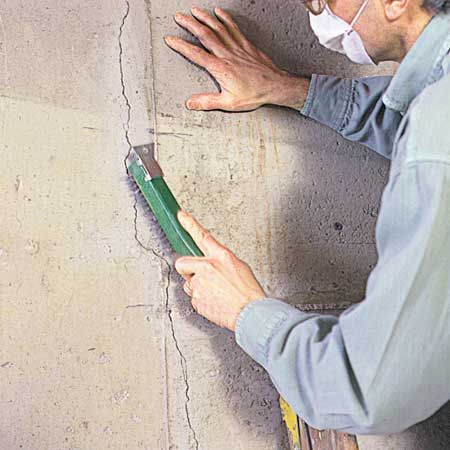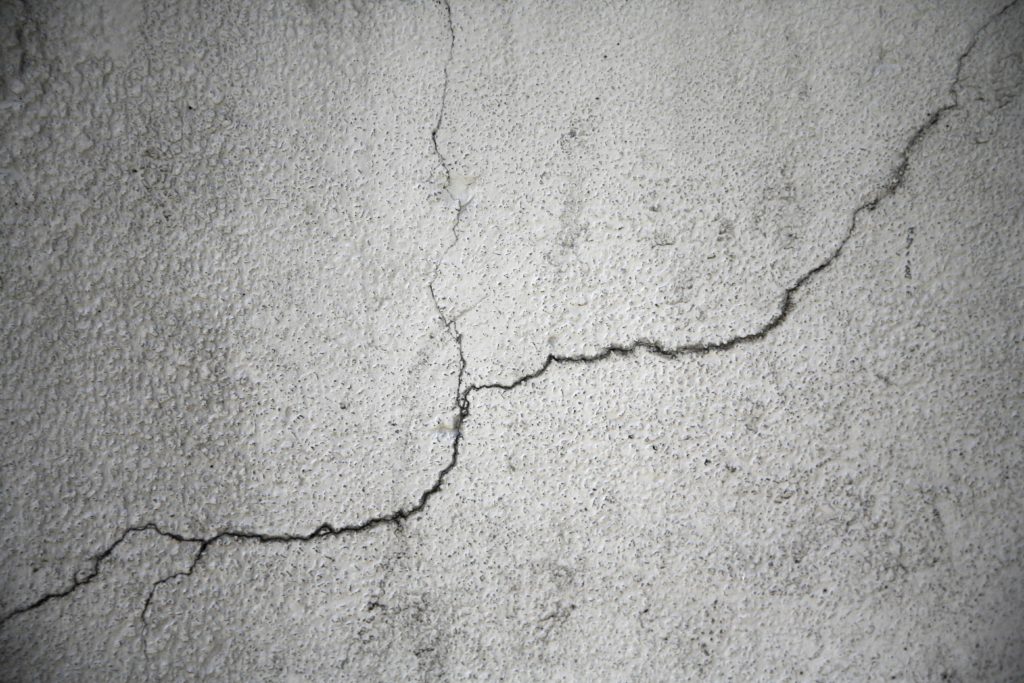Foundation Crack Repair Solutions
Foundation Crack Repair
The words might sound alarming to a homeowner, but at U.S. Waterproofing foundation crack repairs are painless and minimally invasive. Foundation cracks are without question the most common source of seepage in a basement or crawl space. There are several reasons why a foundation can crack.
Foundation’s are constructed using concrete from a ready mix truck. As concrete cures and loses moisture, it shrinks.
The weight of a house sits on the foundation. Due to rainfall (and droughts) the earth beneath the foundation expands (and shrinks), which causes the foundation to settle.
Excessive groundwater from rain or snowmelt saturating the soil next to the foundation walls also create stress to the point where the foundation walls can crack.
When are cracks in basement walls a problem?
Most cracks are miniscule and run vertically or diagonally from the top of the foundation wall down to the bottom. For most homeowners, cracks are a nuisance as they can create basement and crawl space seepage. Seepage can damage your belongings and finishes. It can also create an unhealthy living environment.
It’s important for a homeowner to know that cracks wider than 1/8 of an inch can suggest a structural issue. Horizontal cracks are another telltale sign of a structural problem. Other signs of structural concern include a buckled or bowed foundation wall, a sinking foundation, drywall cracks on the first and second floors, and upstairs doors and windows that previously opened and closed easily but now do not.
How does U.S Waterproofing repair foundation cracks?
If you have a crack in a foundation wall, this can be repaired from the interior or exterior, depending on your basement. If your basement is unfinished (no drywall or paneling) and the crack is exposed on the interior, we’ll likely recommend an inside fix using our Epoxy/Urethane Injection process. This involves sealing the crack on its inside face with an epoxy paste and injecting an expanding urethane resin that fills the crack to the outside soil.
If the crack is obstructed by paneling or drywall, we can still do our work from the inside. In these situations, we remove the drywall (and framing when necessary), do the repair, and then put back back what we removed.
In some instances, it’s more desirable to approach the problem on the exterior. To do that, we dig a small hole at the crack location and fill it with sodium bentonite, which is a granular clay which expands to form a tightly sealed barrier. With this Wall-Clay process, water can’t penetrate the foundation wall and your basement stays dry.
Whatever the repair calls for, we stand behind our work with a transferable lifetime warranty for the homeowner. And when you have been in business as long as we have (and fixed more cracks that just about anyone else in the country!), lifetime really means something! If you want peace of mind and your cracks permanently sealed, schedule a free consultation online today.


